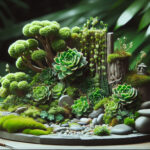Introduction to Crassula
Have you ever found yourself mesmerized by the plump, vibrant foliage of a Jade Plant and wondered about its rightful moniker? Let’s dive into the world of the Crassula genus, a verdant kingdom where these succulent beauties reign supreme. Known affectionately by its common name, the Jade Plant, this plucky plant’s lineage traces back to its stomping grounds in South Africa and Mozambique.
The allure of Crassula plants lies beyond their lush, jade-colored leaves; they’re the living jewel in any horticulturist’s crown. As a testament to their popularity, these hardy plants are often shared between avid gardeners, gracing windowsills and desks with their low-maintenance charm and, with proper care, can become long-standing green companions.
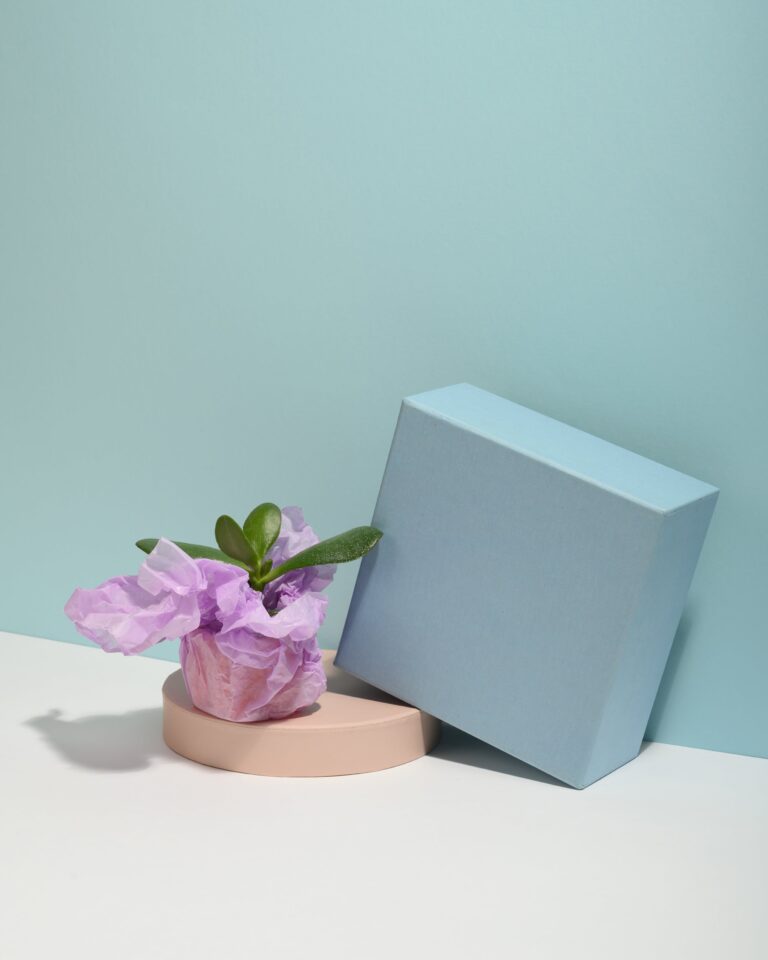
In the realm of succulents, the Crassula genus is a trove of diversity, featuring species like Crassula ovata, the classic Jade Plant. Their remarkable resilience and graceful simplicity make Crassulas a go-to choice both for green-thumbed experts and those still fiddling with their first pair of gardening gloves. While the Jade Plant is often hailed as a symbol of luck and prosperity, it’s also a plant that refuses to make a fuss over its care, as outlined in our extensive guide on succulent care.
From a modest cutting to a robust bushy silhouette, Crassula plants tell a tale of growth and perseverance. Whether you’re a seasoned gardener or a budding enthusiast, let’s cultivate a deeper understanding and appreciation of these fascinating succulents.
The Importance of Pronunciation in Horticulture
Let’s get real for a moment; we’ve all been there – that awkward pause when you’re about to pronounce a plant name you’ve only ever seen in books. Pronunciation is a thorny issue for many of us in the plant world. Whether you’re a seasoned botanist, an enthusiastic horticulturist, or a home gardener, getting those Latin terms and botanical jargon right is nearly as crucial as remembering to water your plants.
Take Crassula, for example – it’s not just a pretty succulent. Saying it wrong might earn you a gentle correction or an awkward chuckle. But beyond potential embarrassment, there’s a solid reason why we should care about pronouncing Crassula correctly. Proper pronunciation can be the bridge to better understanding, communication, and respect within the horticultural community. After all, the correct pronunciation of plant names can encourage a shared language that enhances our collective knowledge.
Imagine discussing a gorgeous species of Crassula with fellow enthusiasts at a plant swap. If you call it ‘Crass-oo-la’ instead of ‘Crass-yoo-la’, communication can become muddled. Is it the correct species? Are you both on the same page? Clear pronunciation ensures everyone digs the same garden, so to speak.
Moreover, for professional horticulturists and botanists who regularly collaborate across borders, the proper pronunciation is not just a nicety – it’s a necessity. It’s about accuracy and the subtle nuances of Latin pronunciation that can make a world of difference when cataloging species, conducting research, and sharing findings. Mispronunciation can lead to misidentification and, in some cases, may even affect conservation efforts.
And let’s not forget about the digitally-driven 21st century where vlogs, podcasts, and online courses are blooming. Nothing slashes credibility like a pronunciation blunder in front of a global audience eager to learn about gardening and botany. In the digital space, words travel fast, and so do mistakes. But when we get it right, knowledge flourishes like a well-tended garden.
To help with this, here’s a video with some handy tips that are bound to make the life of a horticulturist a little easier when it comes to pronunciation:
Lastly, many gardening enthusiasts are self-taught, relying on books and internet forums to expand their vocabulary. Clear pronunciation can empower self-learners to participate confidently in discussions, ensuring that everyone – regardless of their learning path – has a place at the table. So next time you lean in to admire a Crassula, remember, pronouncing it correctly is more than just linguistic gymnastics – it’s a sign of your dedication to the art and science of horticulture.
Dissecting the Pronunciation of Crassula
Have you ever found yourself in a garden center, staring at an array of succulents and wondering, “How do you pronounce Crassula?” You’re not alone! Crassula, the genus of much-loved succulent plants, often leaves plant enthusiasts tongue-tied. Let’s demystify the pronunciation of this horticultural gem once and for all.
First off, the word ‘Crassula’ can be phonetically broken down into three syllables: Kras-soo-lah. Think of it as combining the crispness of a fresh salad “Kras-” with the soothing “soo” sound, and ending with a soft “-lah”. When you say it out loud, it should flow together smoothly: Crassula. Now, let’s make sure you’ve got it down pat.
Imagine you’re walking through a sun-drenched greenhouse. You spot a Crassula ovata, commonly known as the Jade Plant, and you confidently tell your friend about the Crassula (pronounced Kras-soo-lah). The correct pronunciation rolls off your tongue, instantly elevating your succulent savvy in the eyes of your fellow plant admirers.
For a real-life test, how about asking a friend if they’ve ever cared for a Crassula? If they look puzzled, offer a gentle correction with a smile: “It’s Kras-soo-lah“. Sharing knowledge is part of the fun of gardening!
If you’re still not sure about your pronunciation, don’t fret. Click on this audio guide for an auditory example of the word in all its glory. And while you’re there, explore the essential tips for nurturing your Crassula, ensuring it thrives and continues to be a conversation starter.
To truly commit the pronunciation to memory, it’s helpful to see the plant in question. Below is an image of the verdant Crassula, which should help etch the name in your mind:
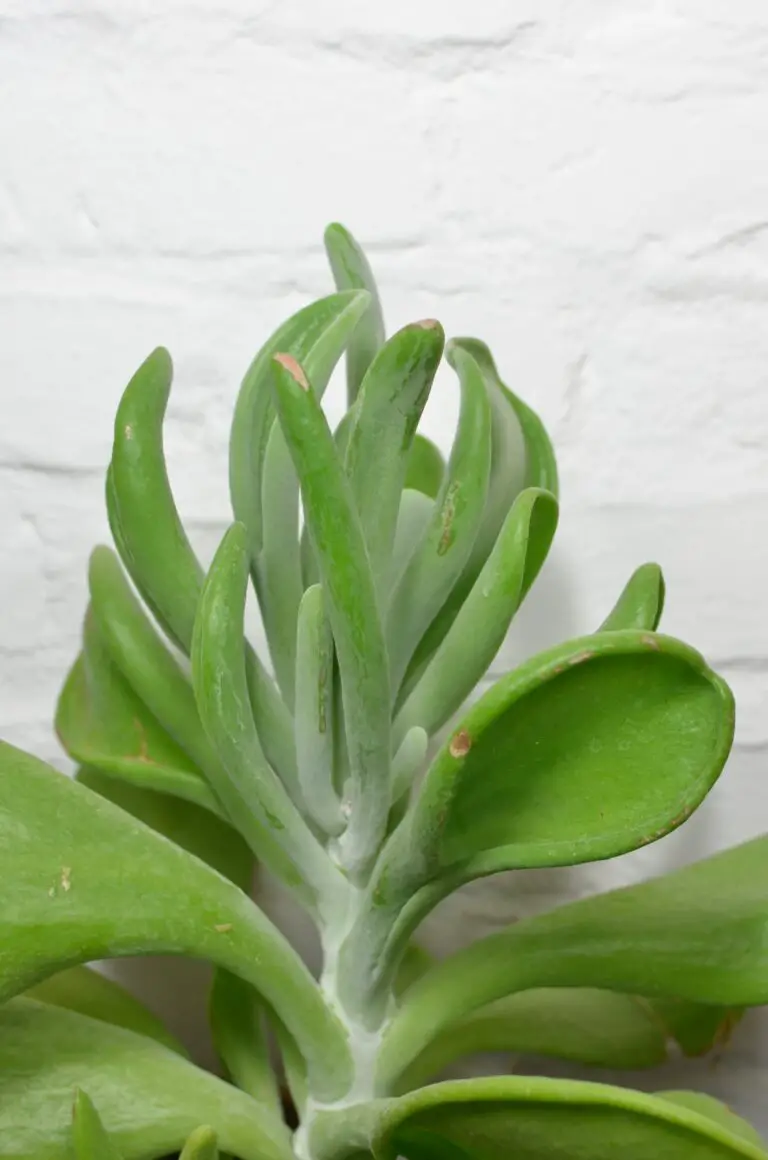
Remember, whether you’re a green-thumbed guru or a budding botanist, correctly pronouncing the names of plants like Crassula will enrich your gardening experience and help you connect with fellow enthusiasts. Say it with us: Kras-soo-lah. Perfect, you’ve got it!
Common Mispronunciations of Crassula
It’s a tongue-twisting challenge for many plant enthusiasts: the correct enunciation of the charming succulent genus, Crassula. As diverse as its species are, so too are the ways in which Crassula gets muddled in everyday conversation. But, why is it so crucial to get it right? Well, imagine asking for advice on your ‘Crash-oola’ at the local nursery, only to be met with blank stares. Embarrassing, right?
One of the most common trip-ups is laying stress on the wrong syllable. It’s not ‘CRA-suh-la’ but rather ‘Cra-SU-la’. Think of it like a crescendo in music, with the emphasis climbing to the second syllable. And let’s not forget the mix-up between ‘Crassula’ and ‘Cassula’; the latter might sound like a tasty pasta dish, but it certainly won’t help your jade plant flourish!

There’s also the great vowel swap – some venture to say ‘Crassoola’, as if it were a character from a children’s book. Yet, the accurate pronunciation is closer to the ‘u’ in ‘umbrella’. If it helps, visualize holding an umbrella over your Crassula to protect it from too much sun, and you’ll likely remember the ‘u’ sound better.
Avoiding these faux pas can be simple if you infuse your learning with a dash of playfulness. Engage with fellow gardeners or perhaps check out resources like How to pronounce Crassula and bring the pronunciation to perfection with a little practice. Meanwhile, if you’re seeking to expand your succulent knowledge beyond pronunciation, weave your way through our ultimate guide to Crassula care. It’s not just about saying it right; it’s about caring right too.
How Pronunciation Can Vary
Imagine this: you’re strolling through a lovely garden center, and you’re struck by the sight of a charming Crassula. You’re eager to know more, so you approach an attendant. But alas, as soon as the word ‘Crassula’ rolls off your tongue, you’re greeted with a puzzled look. Why? The culprit – regional accents and dialects!
The pronunciation of ‘Crassula’ can differ depending on where you’re planting your feet on the globe. It’s like the plant itself, thriving in diverse environments; its name takes on new life through various pronunciations. In some regions, the accent is on the first syllable, crisply pronounced as ‘KRAS-suh-luh’, while others may emphasize the second, giving it a more lyrical ‘kra-SOO-luh’.
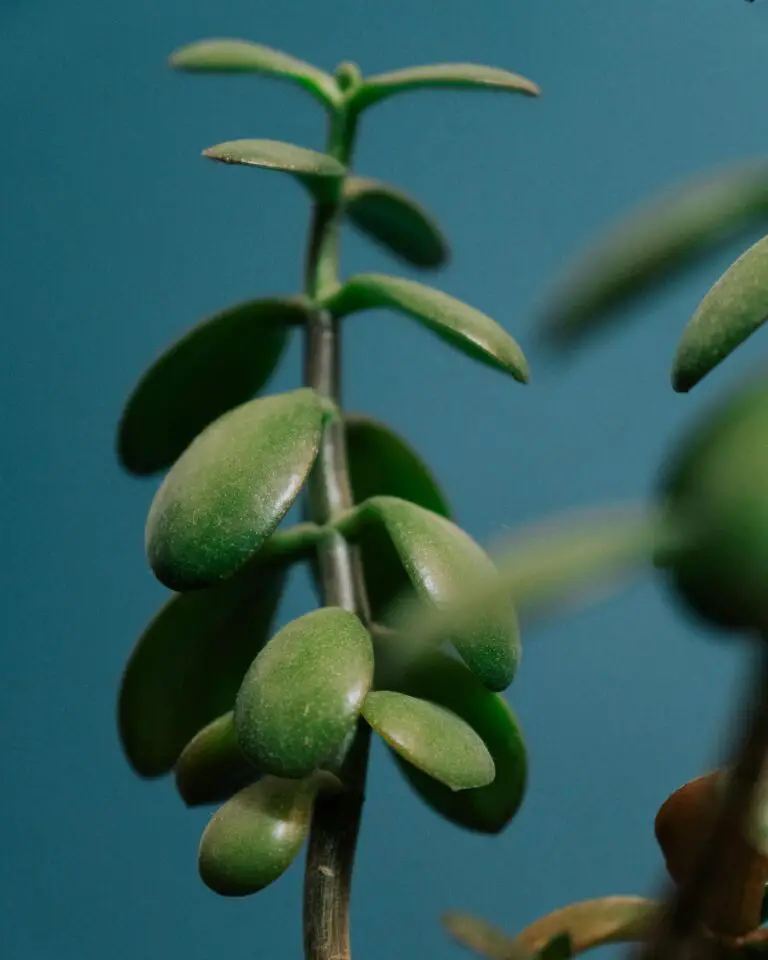
Let’s take a journey through the English-speaking world. Across the North Atlantic, our British friends might put their unique spin on ‘Crassula’, giving it a posh touch. Hop on over to the States, and the American accent adds a twang, slightly altering the way it dances off their tongues. Even within countries, from the Outback to the Scottish Highlands, ‘Crassula’ can sound as varied as the landscapes themselves.
But fear not, plant enthusiasts! While pronunciation may shift, plants don’t judge. Whether you pronounce it with the softness of a morning breeze or the sharpness of a succulent’s edge, your Crassula will bask in your care all the same. The linguistic diversity merely adds to the charm of this potted beauty, allowing for a tapestry of pronunciations that are music to botanical ears. So go on, say it your way, because when it comes to ‘Crassula’, every accent is like a different hue in nature’s vast palette.
Crassula in Different Languages
Ever wondered how to voice out the name of the beloved succulent ‘Crassula’ when you’re globe-trotting or simply brushing up on your botanical lingo? You’re not alone! This plump-leaved plant has made its home across continents and so has its pronunciation. Let’s delve into the delightful symphony of sounds from the corners of the earth where Crassula is warmly embraced.
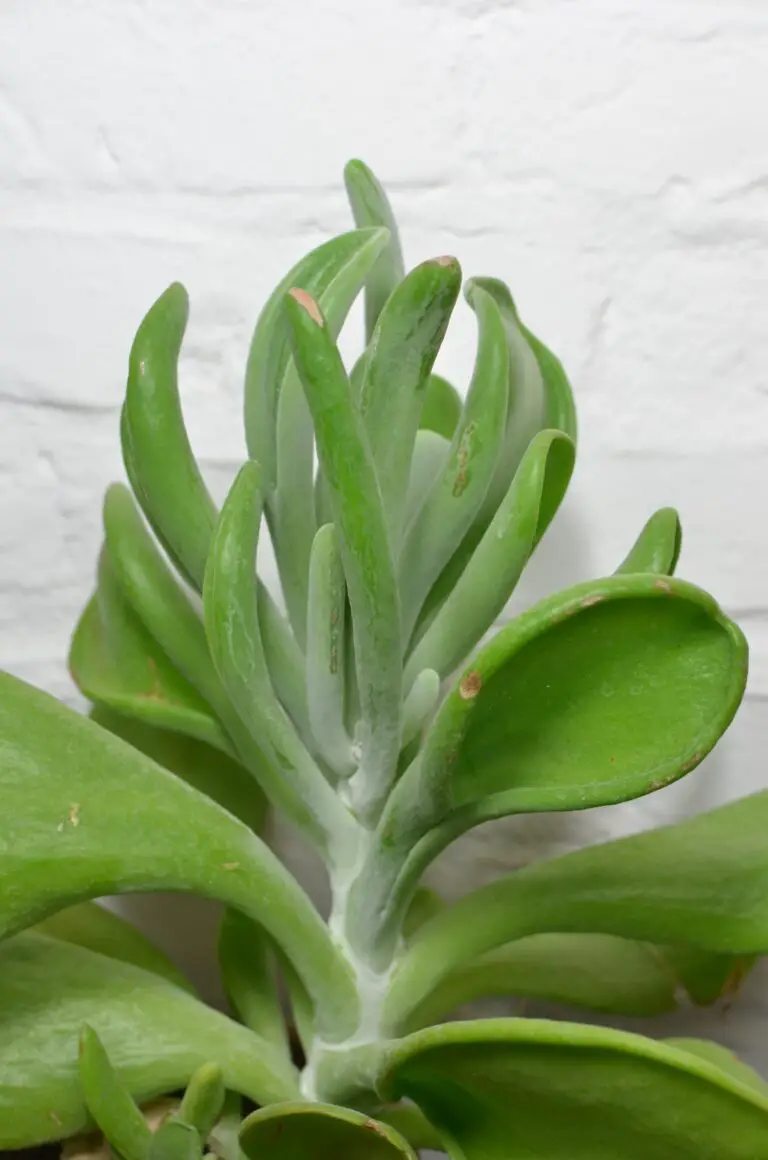
In the sun-drenched vineyards of Italy, where Crassula often adorns stone-clad balconies, ‘Cràssula’ rolls off the tongue with a crisp and catchy accent, emphasizing the first syllable. As we journey to the French countryside, with its elegant chateaux and Crassula often basking by lavishly carved windowsills, it’s pronounced more softly and sophisticatedly as ‘Kras-sü-la’, like a secret only the chicest gardeners know.
Crossing over to Japan, the land of disciplined ikebana where Crassula forms part of the exquisite display, it’s enunciated emphatically as ‘Kurasura’, highlighting the plant’s aesthetic in their minimalist arrangements. Venture down to the bustling markets of Mexico, and you’ll hear ‘Cras-sú-la’ chanted amidst an array of vibrant pottery brimming with these fleshy green gems.
While we admire how eloquently Crassula’s name translates across world languages, remember that experiencing the name aloud can be just as enchanting as the plant itself. For a spellbinding auditory treat, check out this pronunciation guide and get your vocal chords wrapped around the local way to say it—no passport required!
Whether you whisper it softly or proclaim it proudly, Crassula remains a universal icon in the plant kingdom, knitting together plant enthusiasts through its mere mention. So next time you’re discussing your green companions, sprinkle in a dash of international flair by pronouncing Crassula just like a local!
Insider Tips for Learning Botanical Pronunciations
Ever been in a situation where you’re alluding to your cherished Crassula, only to get blank stares in return? It’s not the listener’s fault; botanical names can be tricky! But fret not, green-thumbed friends, as we unveil some savvy tactics to nail those plant pronunciations. Imagine the nods of understanding the next time you proudly share your knowledge on these succulent treasures.
First off, we’re turning to the wisdom of the ancients: Latin. Yes, that’s right, the language of Roman togas and epic poetry will be your ally in the botanic realm. Many plant names have Latin origins, and grasping the basics can be a game changer. But, we’re going for modern fluency here, not preparing you for a time machine trip, so a quick brush-up on Latin pronunciation guides online will suffice.
If the thought of Latin intimidates you, fear not, for technology comes to our rescue. There’s an app (or perhaps a horde of them) for that! From pronunciation apps to informative gardening blogs, a digital toolkit can arm you with the phonetics of ‘Crassula’ and its botanical brethren. And because we live in a world of social connections, don’t overlook video platforms where enthusiastic gardeners articulate plant names with zest.
Allow me to introduce an image that might just make you inclined to whisper sweet nothings to your Crassula – a visual can sometimes be worth a thousand correct pronunciations. Here’s a snapshot that conjures the essence of getting up close and personal with your succulent pals:
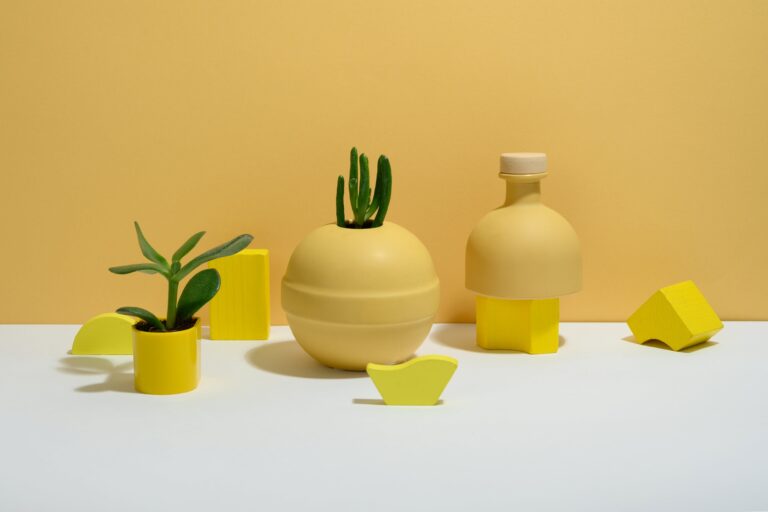
However, sometimes the best learning happens through good old human interaction. Attend workshops or join a local gardening club. There’s nothing quite like the camaraderie that blooms from sharing and learning with fellow enthusiasts, all keen on demystifying the tongue-twisters like ‘Crassula ovata.’
And what about a memory hook? Pair the name ‘Crassula’ with a characteristic feature or a personal anecdote. Perhaps it’s the ‘crass’ in Crassula that makes you think of its thick, water-storing leaves, robust against drought. Or maybe it was the first plant you propagated successfully, a testament to your growing botanical expertise. These mnemonic devices are your shorthand to a flourishing lexicon of plant names.
Entwine these strategies together, and you’ll be well on your way to becoming the language connoisseur of the plant world. Accentuate the botanical names like a pro and share your knowledge ‘Crassula’-ly clear! The next time someone inquires about your verdant comrade, you’ll be primed to respond with confidence. Let the journey of learning begin!
Crassula Care and Pronunciation
Ever wonder how a mispronounced name could lead to an epic gardening fail? Imagine scouring the internet for care tips for your ‘Krass-uh-luh’, only to find out it’s actually pronounced ‘Kra-syoo-la’ and you’ve been searching all wrong! Getting the pronunciation right is more than just about sounding like a seasoned horticulturalist; it’s about unlocking a world of accurate information for your beloved plant.
Let’s cut straight to the chase: ‘Crassula’, a name derived from the Latin word meaning ‘thick’, refers to the succulent’s fleshy leaves. It’s like saying ‘krass-you-la’. Now you might think, why does this even matter? Well, if you’ve ever been down the rabbit hole of online plant forums, you know that one incorrect vowel can be the difference between finding a treasure trove of knowledge or ending up in a no-man’s land of information.
This robust houseplant isn’t just a feast for the eyes but also a beginner gardener’s dream, owing to its forgiving nature. For those new to the Crassula club, care is a breeze – these succulents relish bright, indirect sunlight, enjoy a bit of neglect when it comes to watering, and thrive in a well-draining soil mix. A word to the wise: overwatering is the archenemy of Crassula, so it’s best to err on the side of underwatering.
Real-life example time — remember Jane from your office? Started with one tiny Crassula ovata, and now her desk resembles a mini botanical garden. Her secret? Understanding that correct pronunciation leads to better research, which translates to the right care. She knew that calling her succulent by its right name, studying its specific needs, and applying that knowledge made her the green thumb we all envy.
Become the plant parent your Crassula deserves by diving into the wealth of information available, but first, get that pronunciation down pat! Check out this handy video for a clear demonstration:
Remember: whether it’s ‘Crassula ovata’, the classic jade plant, or its many cousins, knowing how to say it right is your gateway to becoming the informed, confident, and successful plant guardian you aspire to be. So go ahead, say it with us: ‘Kra-syoo-la’. Feels good, doesn’t it?
Frequently Asked Questions
Ever wondered about that plump, eye-catching succulent adorning desks and windowsills? That’s the Crassula, also known as the Jade Plant! But before we delve into tips to keep this green buddy thriving, let’s clear up the number-one mystery: its pronunciation. So, how do you say “Crassula”? Think ‘Kra-SOO-luh’ – just like that! Now, let’s tackle some questions you may have about this charming plant.
Is it “CRA-suh-la” or “cras-SU-la”?
It’s the latter – “cras-SU-la.” Put the stress on the second syllable, and you’ll sound like a true plant aficionado. Remember, if you can say “Dracula,” you can pronounce Crassula!
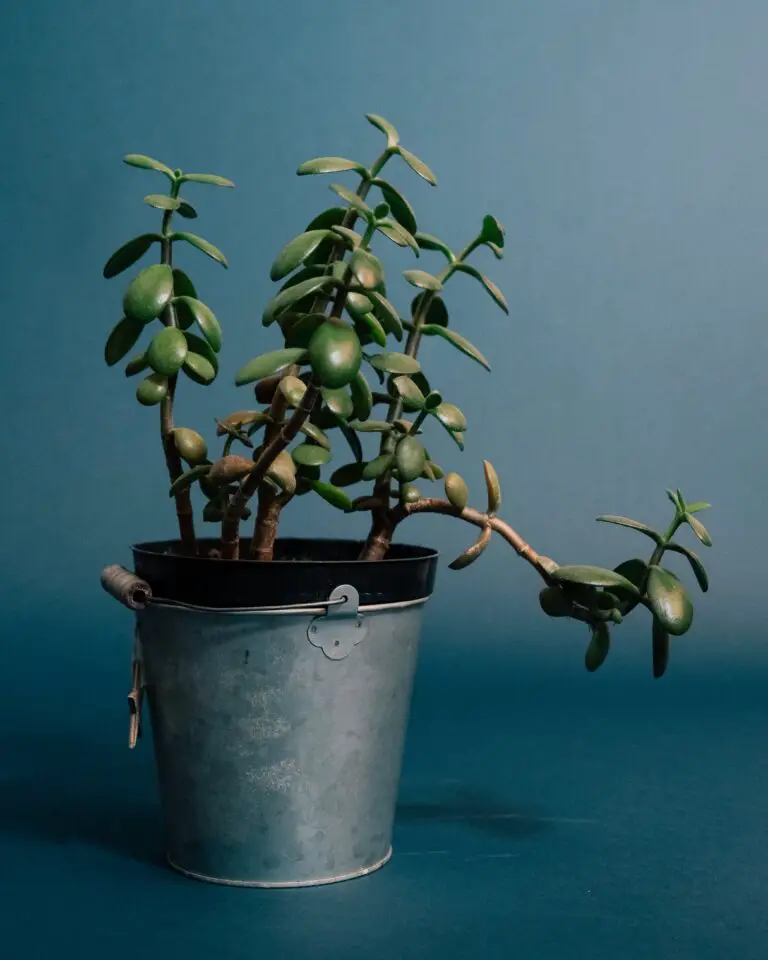
My Crassula’s leaves are drooping; what am I doing wrong?
It’s like a plant’s cry for help—too much water, perhaps! These beauties are drought lovers. Imagine them in their cozy, dry native habitat and mimic that. Less is more when it comes to watering your Crassula.
Can Crassula thrive in low light?
They’re the sun-worshippers of the plant world! A Crassula parked in a dim corner might live, but to see it really flourish, give it a sunbath. A south-facing window is its happy place, just like a cat seeking out that sunny spot on the carpet.
Do I need to whisper sweet nothings to my Crassula for it to grow?
While they might not need sweet talk, a little plant pep-talk never hurts! Crassula respond well to proper lighting, moderate watering, and occasional feeding. Speak the universal language of good care, and you’ll see growth that’s music to your eyes.
Should I worry about pests on my Crassula?
Our Crassula friends are pretty hardy, but they’re not invincible superheroes. Mealybugs and spider mites can crash the party. Keep an eye out for uninvited guests and arm yourself with insecticidal soap – just in case!
Armed with the right pronunciation and these nuggets of plant wisdom, you’re all set to be a Crassula pro. Happy planting!

